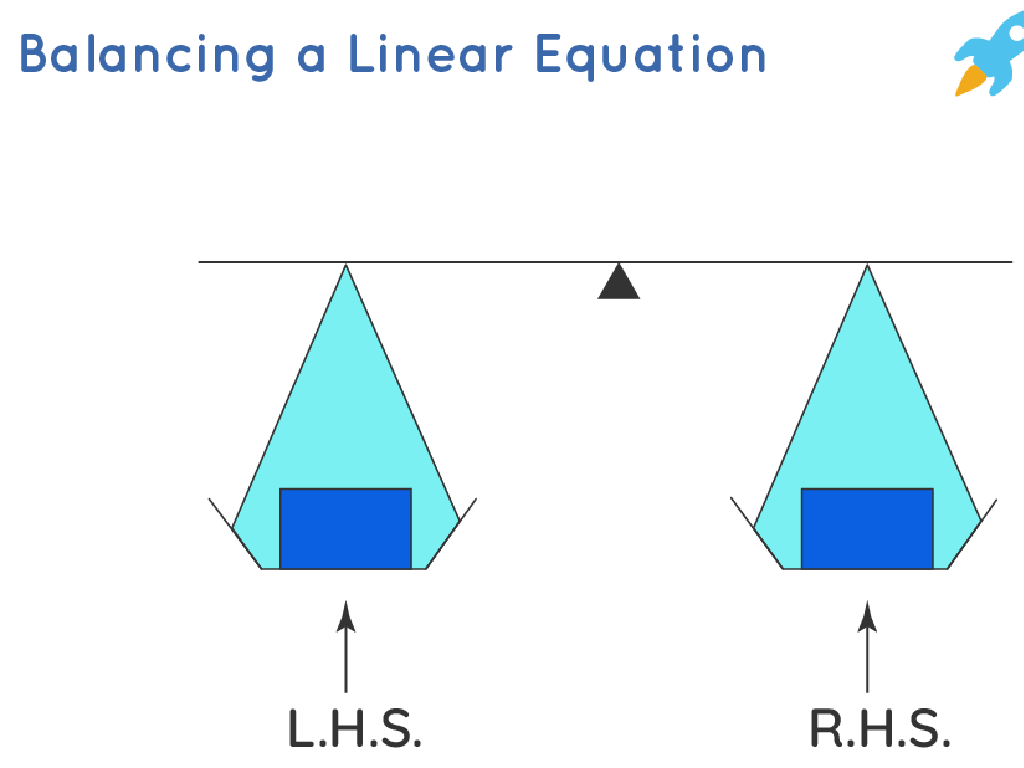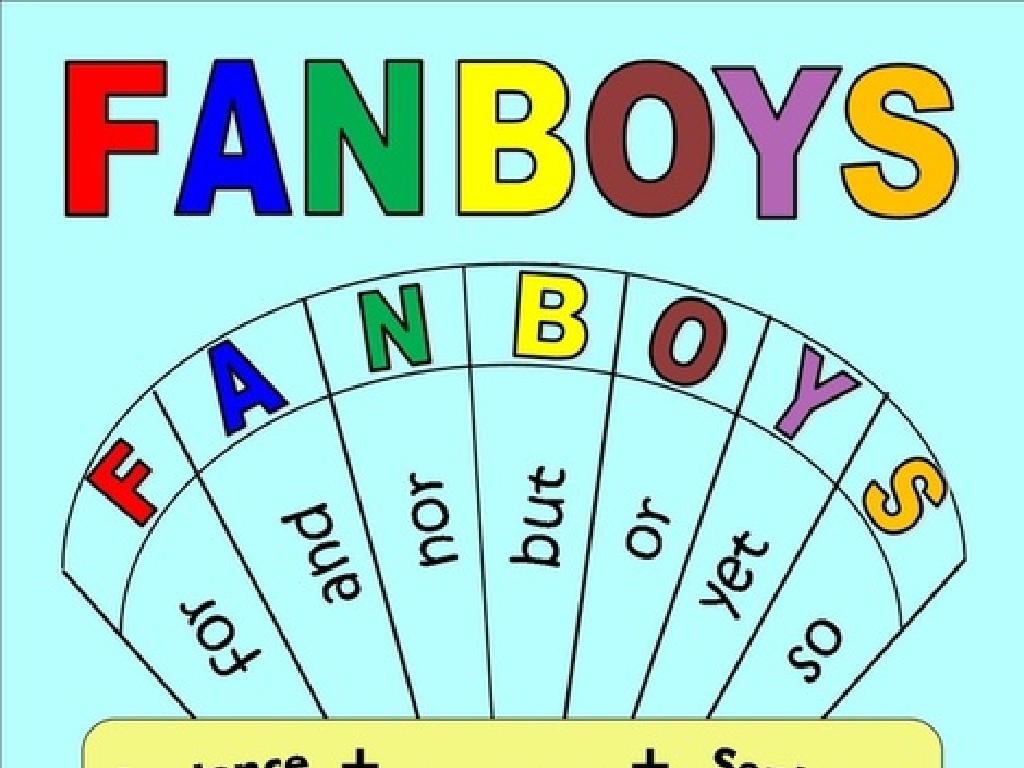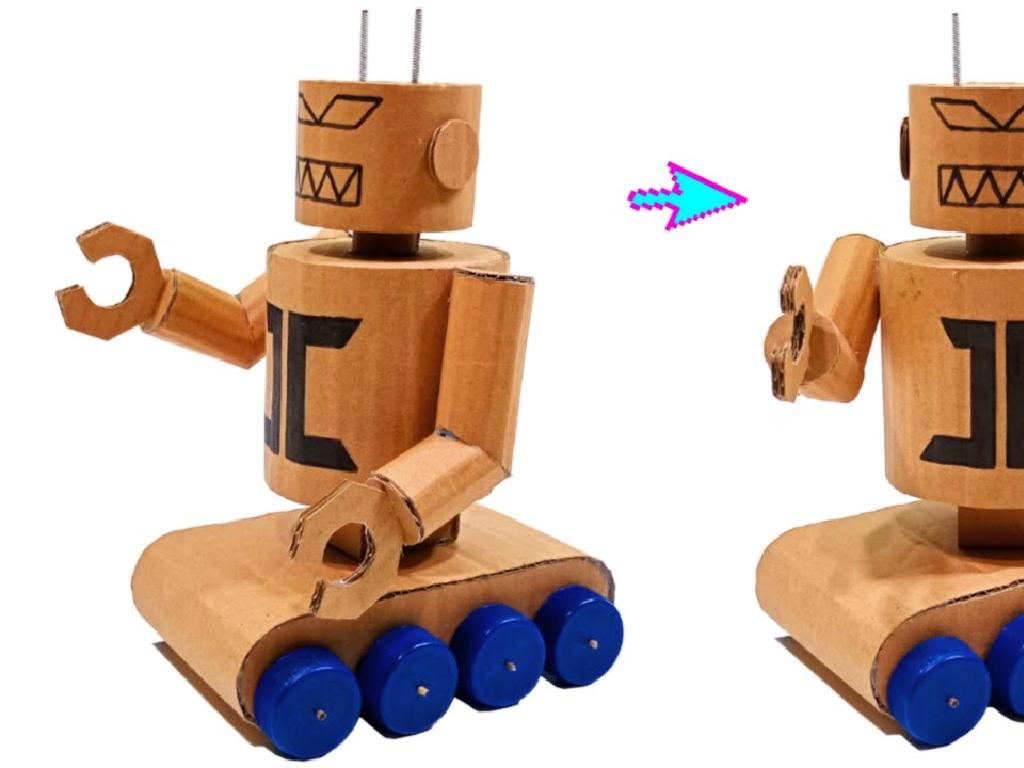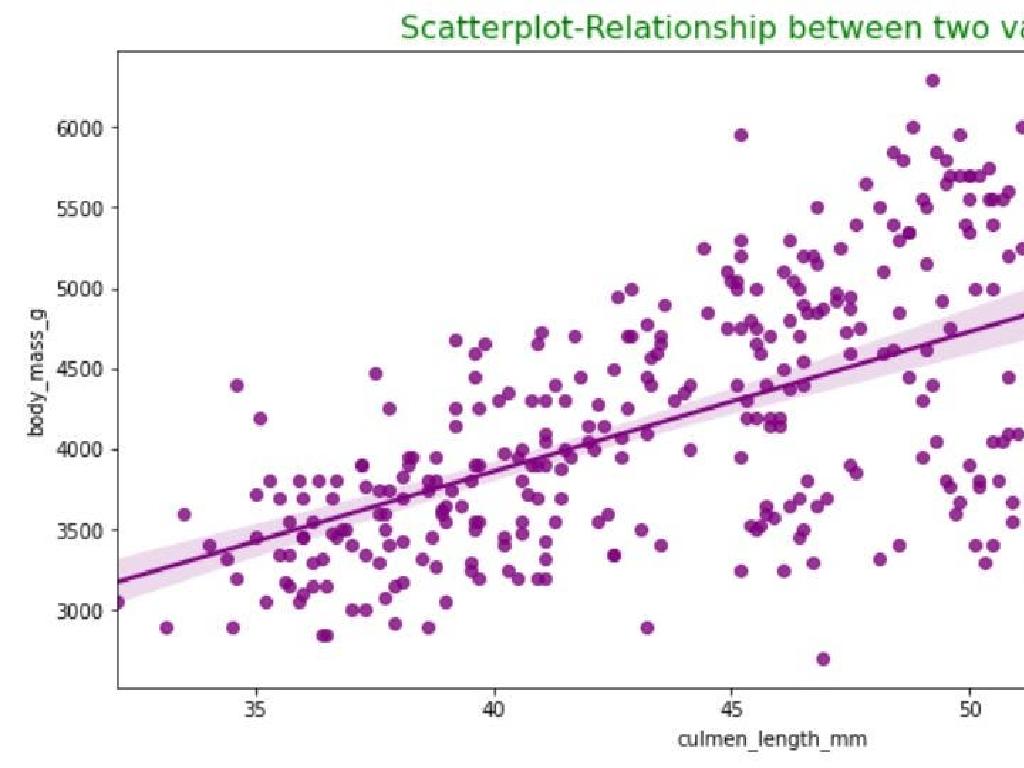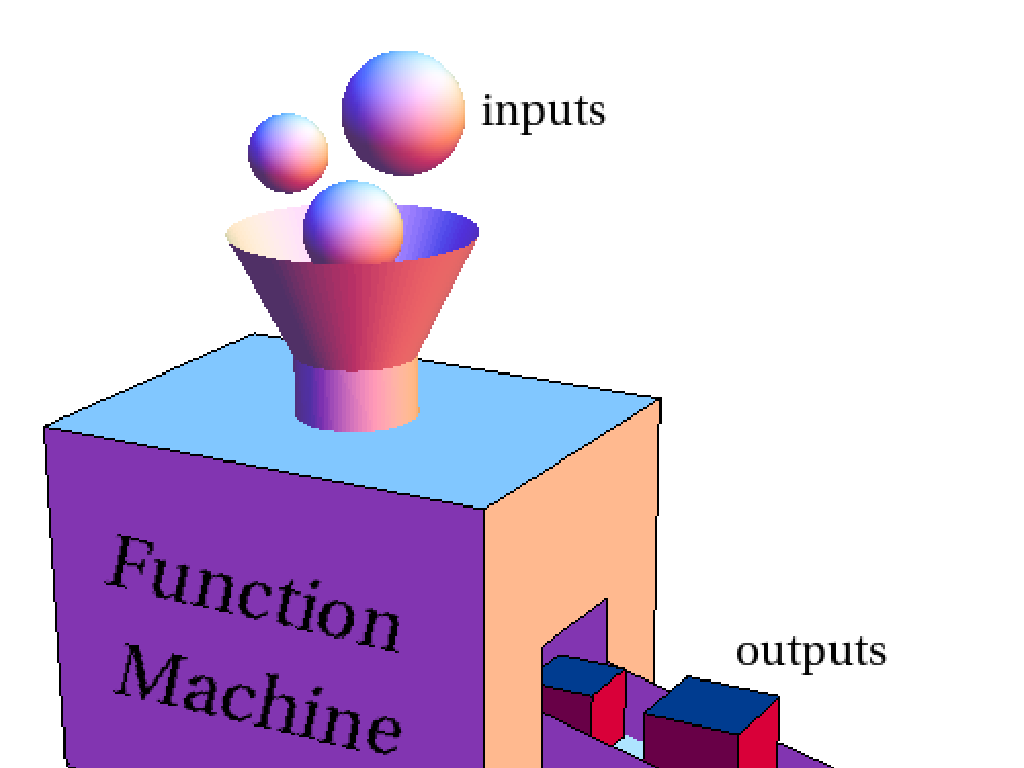Interpret Picture Graphs
Subject: Math
Grade: Kindergarten
Topic: Data And Graphs
Please LOG IN to download the presentation. Access is available to registered users only.
View More Content
Welcome to Picture Graphs!
– Greet the class: Good morning!
– Today’s topic: Picture graphs
– Picture graphs use images to show numbers
– Observing pictures
– Look at the graph and describe the images
– Discuss what we see
– Share your observations with the class
|
This slide is designed to introduce Kindergarten students to the concept of picture graphs in a fun and interactive way. Start the class with a warm greeting to set a positive tone. Explain that picture graphs are a way to represent data with images, making it easier to count and compare. Show them a simple picture graph and ask them to describe what they see. This could be a graph with images of fruits, animals, or any familiar objects. Encourage them to talk about the different pictures and what they might represent. This activity will help them to begin understanding how to interpret data visually and how to discuss it in a group setting.
Understanding Picture Graphs
– Picture graphs use images
– to show data visually, making it fun and easy to understand.
– Each image represents a number
– For example, 1 apple picture might represent 5 real apples.
– Counting pictures equals counting items
– If we have 4 apple pictures, we have 20 apples in total.
– Let’s practice counting together!
|
This slide introduces kindergarteners to the concept of picture graphs, a fundamental part of understanding data in a visual format. Picture graphs use symbols or images to represent data, which can make complex information more accessible to young learners. Each image on the graph will correspond to a certain number of items, and by counting the pictures, students can determine the total number of items represented. During the lesson, engage the students by counting images together and help them understand that each picture is a representation of one or more real-life objects. This activity not only teaches them about graphs but also reinforces counting skills.
Creating Our Picture Graph
– Let’s make a picture graph!
– First, pick something to count
– Maybe count apples, books, or toys?
– Draw pictures for each item
– Use simple drawings to represent items
– Show how many with pictures
– If we have 3 apples, draw 3 apple pictures
|
This slide is designed to introduce Kindergarten students to the concept of creating picture graphs. Start by explaining that a picture graph uses images to represent data, making it easier to understand. Encourage the children to think of items they would like to count, such as fruits, toys, or classroom objects. Guide them through the process of representing each item with a simple drawing, ensuring that the number of drawings corresponds to the quantity of the items. This hands-on activity will help them grasp the basics of data representation and interpretation in a fun and engaging way. For the class activity, provide them with a template or a large paper where they can create their own picture graphs with stickers or stamps.
Understanding Our Picture Graph
– Examine our class picture graph
– Each picture represents an amount
– If one ice cream picture equals 2 scoops, what do 3 ice cream pictures mean?
– Count the objects in the graph
– Use your fingers to help count each picture’s total
– Discuss what we observed
– Share how many of each item we found
|
This slide is aimed at helping Kindergarten students understand the basics of interpreting picture graphs. Start by showing them the class-created picture graph. Explain that each picture on the graph stands for a certain number of things. Ask the students what they think each picture might represent, guiding them to understand the concept of symbols representing quantities. Then, move on to counting the objects, encouraging the students to use their fingers or counters to help them count. Finally, have a discussion with the class about what they observed from the graph, such as which object had the most pictures or the least. This interactive approach will help solidify their understanding of data representation through picture graphs.
Comparing with Picture Graphs
– Picture graphs show comparisons
– Find which object is most common
– Look at the pictures, count and see which has the most.
– Find which object is least common
– Look at the pictures, count and see which has the least.
– Practice with real examples
– Use toys or fruits to create a picture graph and compare.
|
This slide introduces kindergarteners to the concept of using picture graphs to compare quantities of different objects. Start by explaining that a picture graph uses images to represent data, making it easier to see which items are more or less common. Encourage the students to practice by counting the number of images representing each object in a graph to determine which has the most and which has the least. Incorporate hands-on activities where students can use physical objects like toys or fruits to create their own picture graphs and visually compare quantities. This will help them understand the concept of comparison and develop their counting skills.
Let’s Practice Together: Making a Picture Graph!
– It’s your turn to make a graph
– We’ll create a graph together
– Pick an object to count
– Maybe blocks, books, or crayons?
– Draw pictures for each one
– Each picture represents one object
|
This slide is designed to be an interactive class activity where students will engage in creating their own picture graph. Start by explaining that they will now apply what they’ve learned about picture graphs. Guide the class to choose objects they can easily count, such as blocks, books, or crayons. Each student or group of students should pick one type of object to count. Then, they will draw a simple picture for each item they count, creating a visual representation of the quantity. This hands-on activity will help solidify their understanding of picture graphs and how they represent data visually. Provide assistance as needed and ensure each student is participating and understanding the concept.
Class Activity: Create Your Own Picture Graph
– Time to make a picture graph!
– Use stickers for items we count
– Each sticker stands for one item
– Share your graph with everyone
– Explain what your graph shows
– Tell us the story of your graph
|
This activity is designed to help Kindergarten students understand the concept of picture graphs by creating one themselves. Provide a variety of stickers and items for the children to count, such as fruits, shapes, or animals. Guide them to place the correct number of stickers for each item they count onto a template of a graph. Once completed, each student will present their graph to the class, explaining what each sticker represents and what their graph is showing. This will help them practice counting, graph interpretation, and speaking skills. Possible variations of the activity could include grouping by color, size, or type of item. Encourage creativity and ensure each child understands the one-to-one correspondence between the stickers and the items counted.
Review: Picture Graphs
– Recap on picture graphs
– We learned that picture graphs use images to show numbers
– Steps to create a picture graph
– Choose a topic, collect data, draw images to represent numbers
– Open floor for questions
– It’s okay to ask if something is unclear, we’re here to learn!
|
This slide aims to consolidate the day’s learning by reviewing the concept of picture graphs. Start by asking the students what they remember about picture graphs to assess their understanding. Then, guide them through the process of creating a picture graph, step by step, to reinforce the lesson. Encourage the children to ask questions about anything they might not understand, ensuring that they feel comfortable and supported in their learning environment. This interactive session will help solidify their grasp of the topic and prepare them for practical applications of picture graphs.
Conclusion: Picture Graph Wonders
– Excellent work on picture graphs!
– Picture graphs make counting easy
– Each picture stands for a number to count
– They also help us see differences
– Compare amounts by looking at pictures
– Excited for our next math adventure?
|
As we wrap up today’s lesson on picture graphs, congratulate the students on their hard work and understanding. Reinforce the concept that picture graphs are tools that help us count items quickly and compare quantities visually. Encourage the students to look for examples of picture graphs in their surroundings or create their own at home for practice. Let them know that their learning journey will continue and that there’s much more to explore and enjoy in math. Your enthusiasm will inspire them to look forward to the next lesson.

